Monitoring the impact of River Mondego restoration
The project Habitat restoration for diadromous fish in River Mondego is focused on the construction of nature-like fish passes in five weirs, one located downstream from Açude-Ponte dam and the other four located upstream from this dam.
This project continues the habitat restoration of the River Mondego, initiated with the construction of a vertical slot fish pass in the Açude-Ponte dam in 2011, promoted by the Portuguese Environmental Agency. This work represented the first step in the rehabilitation of the longitudinal connectivity of this highly regulated and fragmented watershed.
The restoration measures applied in River Mondego are accompanied by pre- and post-operational monitoring, developed through a multiplicity of techniques, including video counts at Açude-Ponte dam fish pass, electrofishing campaigns, inquires to professional fishermen and bio-telemetry (radio, physiological EMG, PIT telemetry) surveys that aim to assess the efficiency of the fish passes, and accompany the abundancy of the target species before and after the construction of these infrastructures.
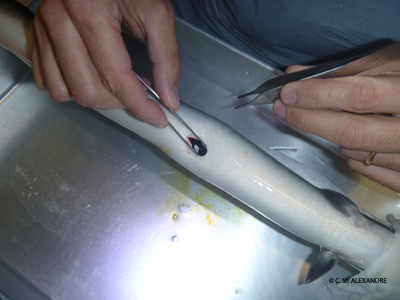 Silver eel acoustic transmitter implantation. | 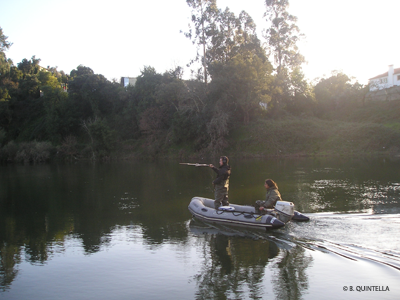 Sea lamprey tracking. |
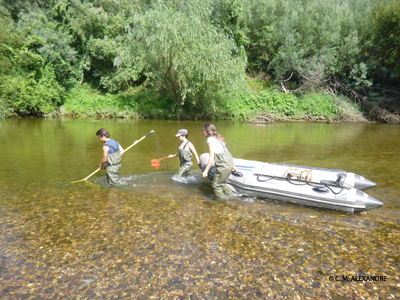 Sea lamprey and eel sampling in River Mondego. | 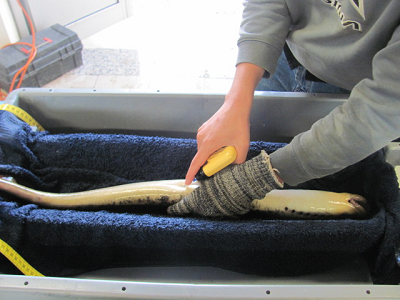 Sea lamprey tagging with PIT-tag. |
The downstream migration (i.e., escapement) success of silver eels will also be assessed. Silver eels escapement will be evaluated with passive acoustic telemetry with an array of eight fixed listening stations at strategic locations.
Monitoring results are available for pre- and post-operational phases for the fish pass installed in 2011 in the Açude-Ponte dam, whereas for the remaining weirs, which interventions are still taking place, data is available only for the pre-operational phase.
So far, the restoration actions taking place in River Mondego are retrieving very positive results, with the Açude-Ponte fish pass being used in both directions by a number of autochthonous species with distinct migratory behaviors and swimming performances, namely: sea lamprey, allis- and twaite shad, Iberian barbel, Iberian nase, thinlipped grey mullet, brown/sea trout (Salmo trutta L.) and European eel.
Professional fishermen also agree that important commercial species (i.e sea lamprey and shads) abundance increased significantly upstream from the Açude-Ponte dam, leading to a growing demand for professional fishing permits in the upper reaches of River Mondego.
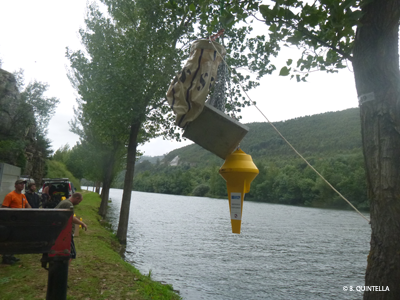 Placement of the mooring system. | 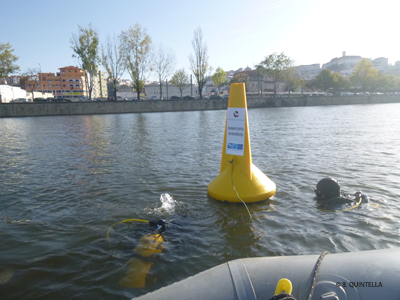 Mooring system surface buoy. |
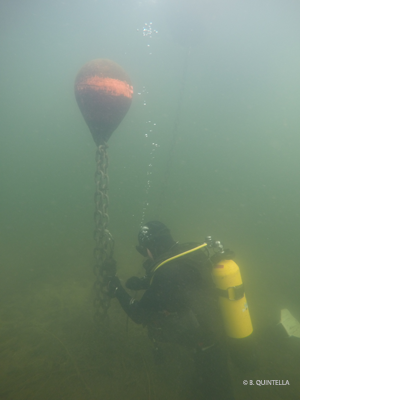 Attachment of the acoustic receiver. | 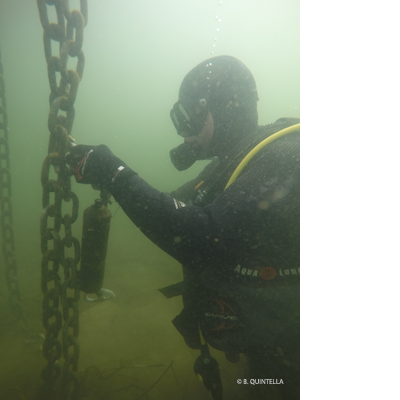 VR2w acoustic receiver. |